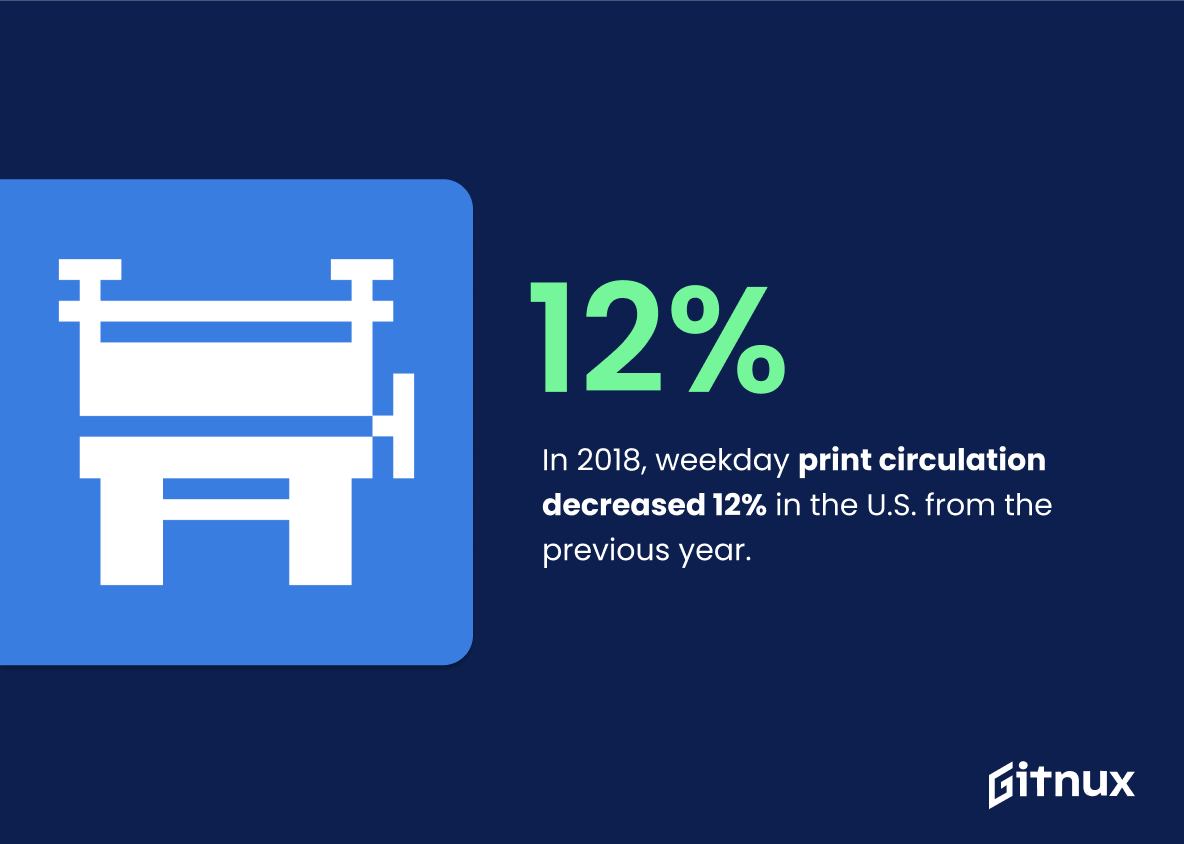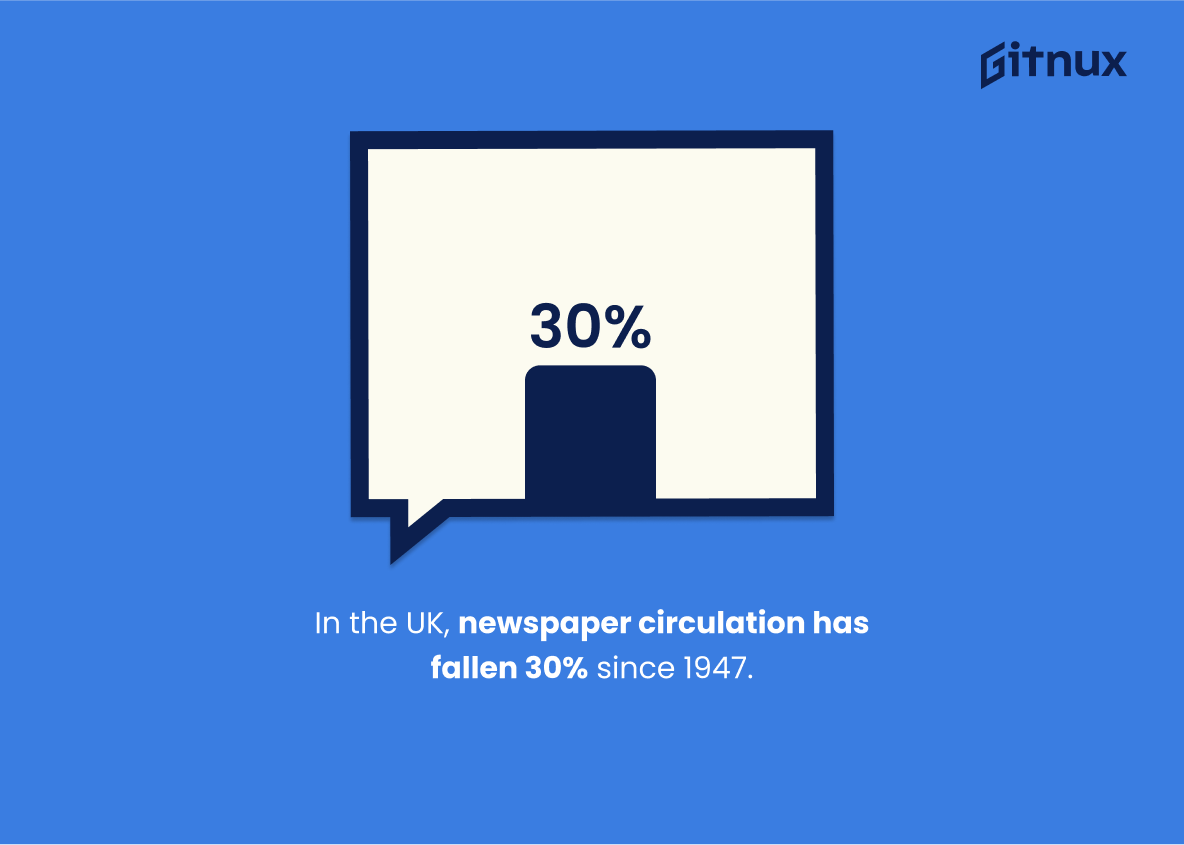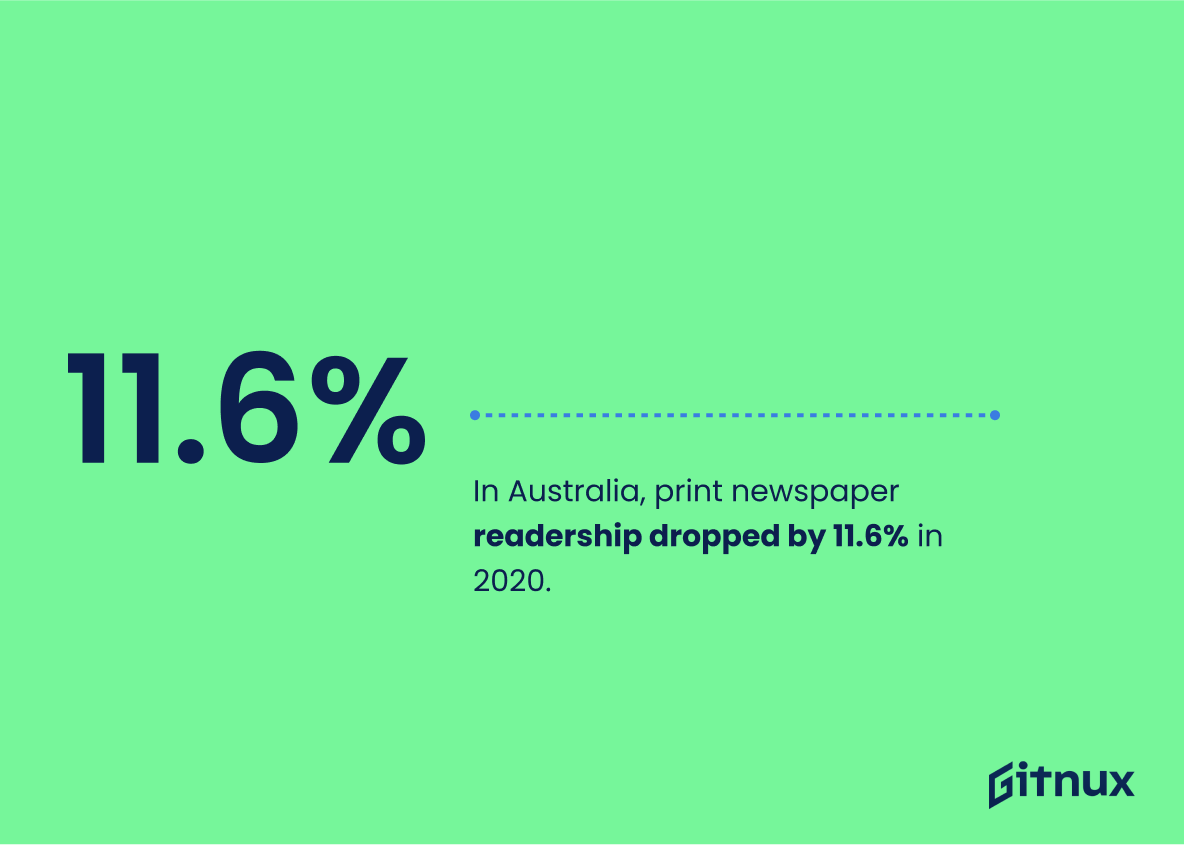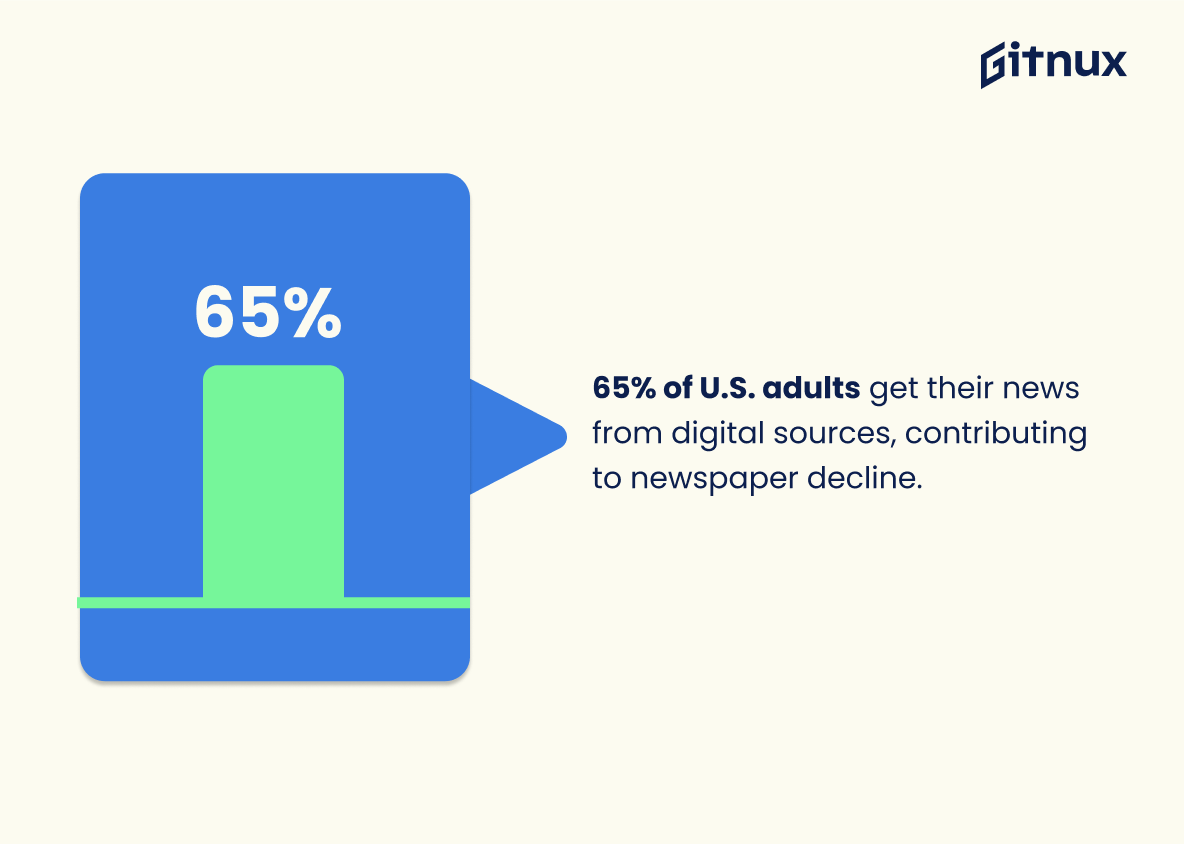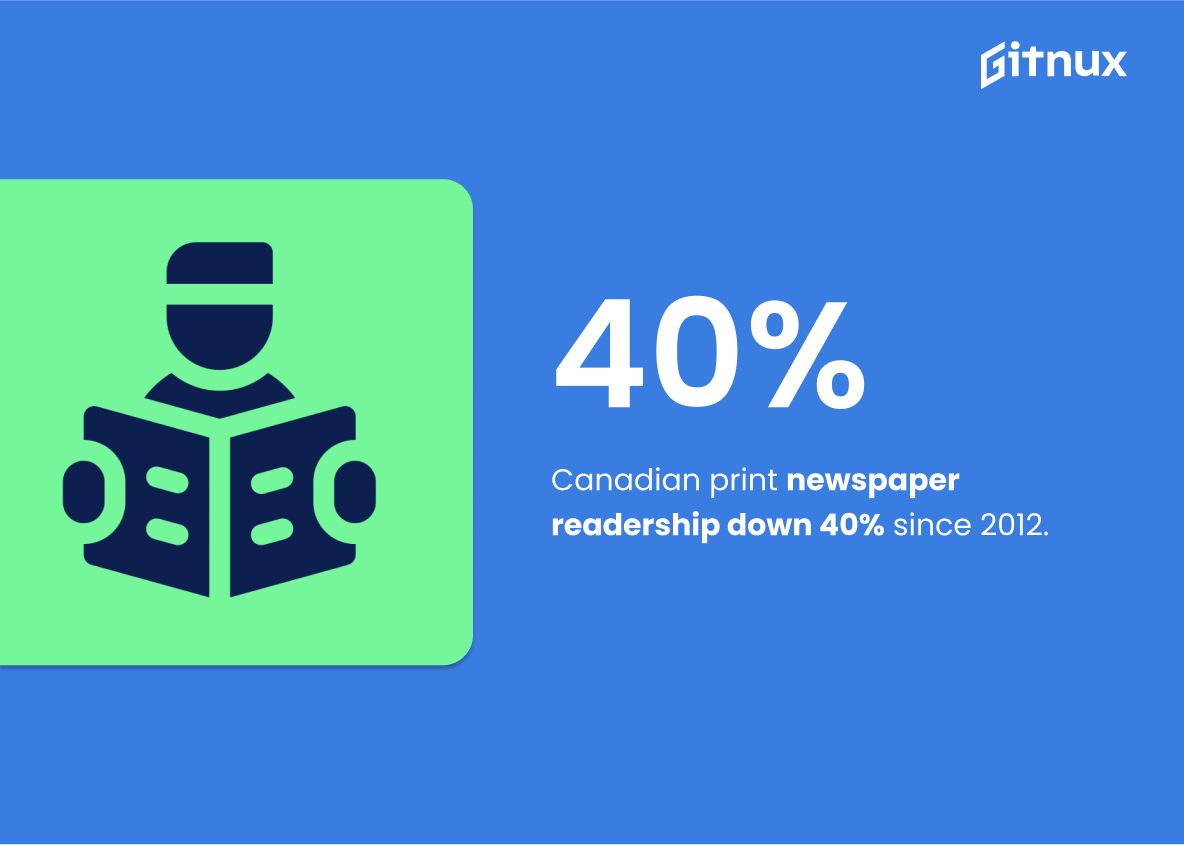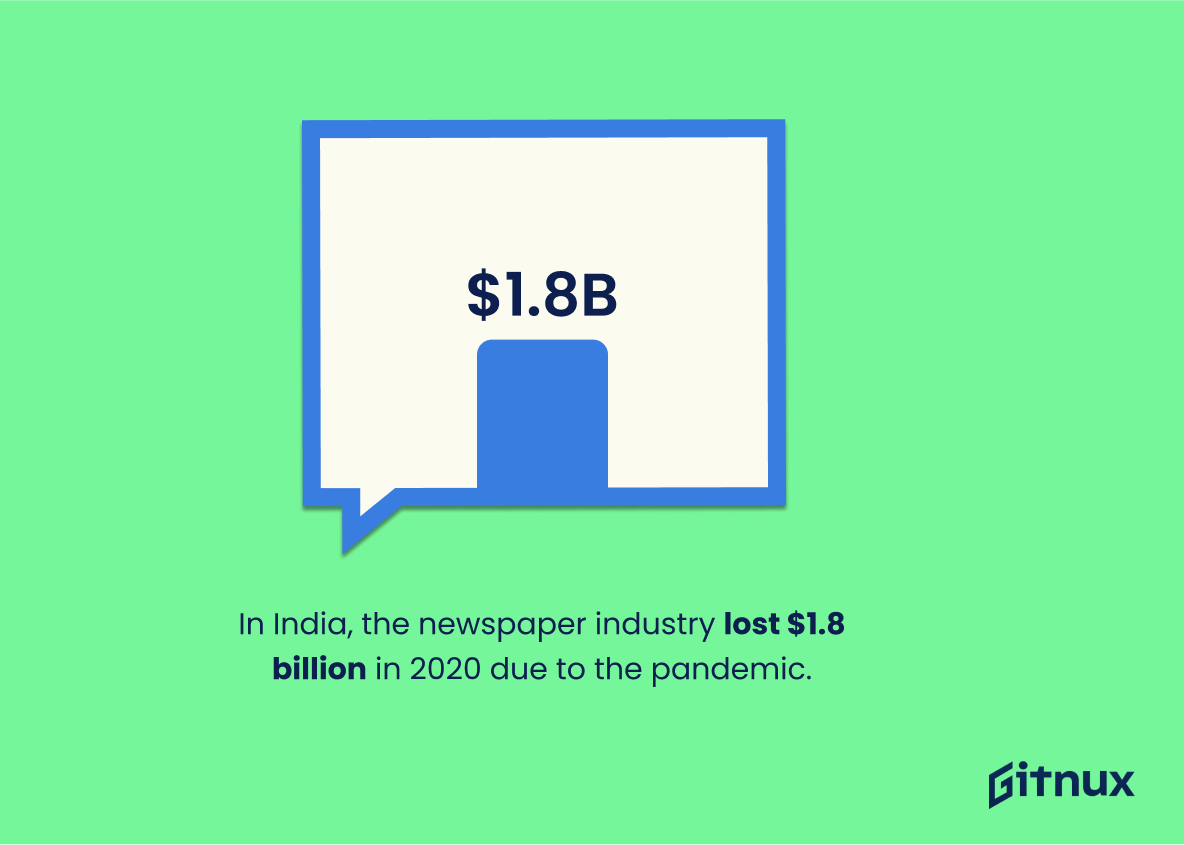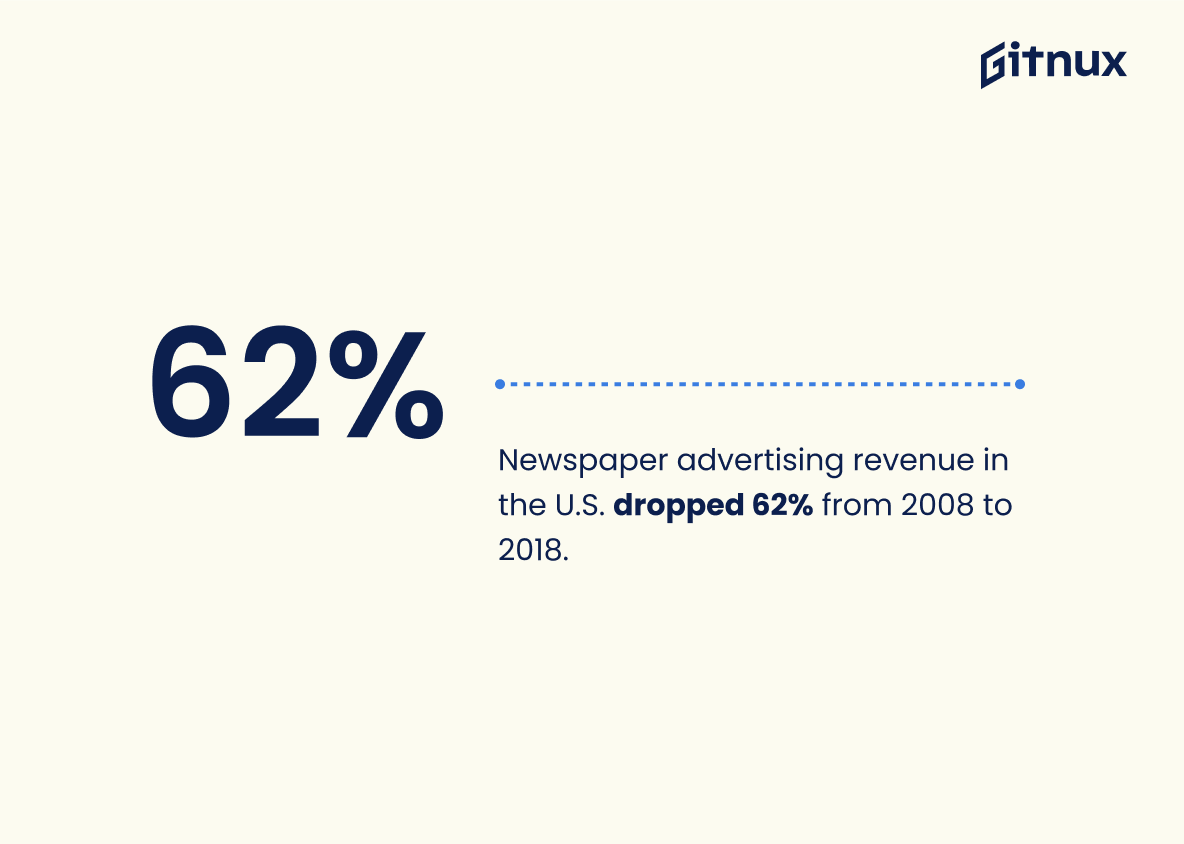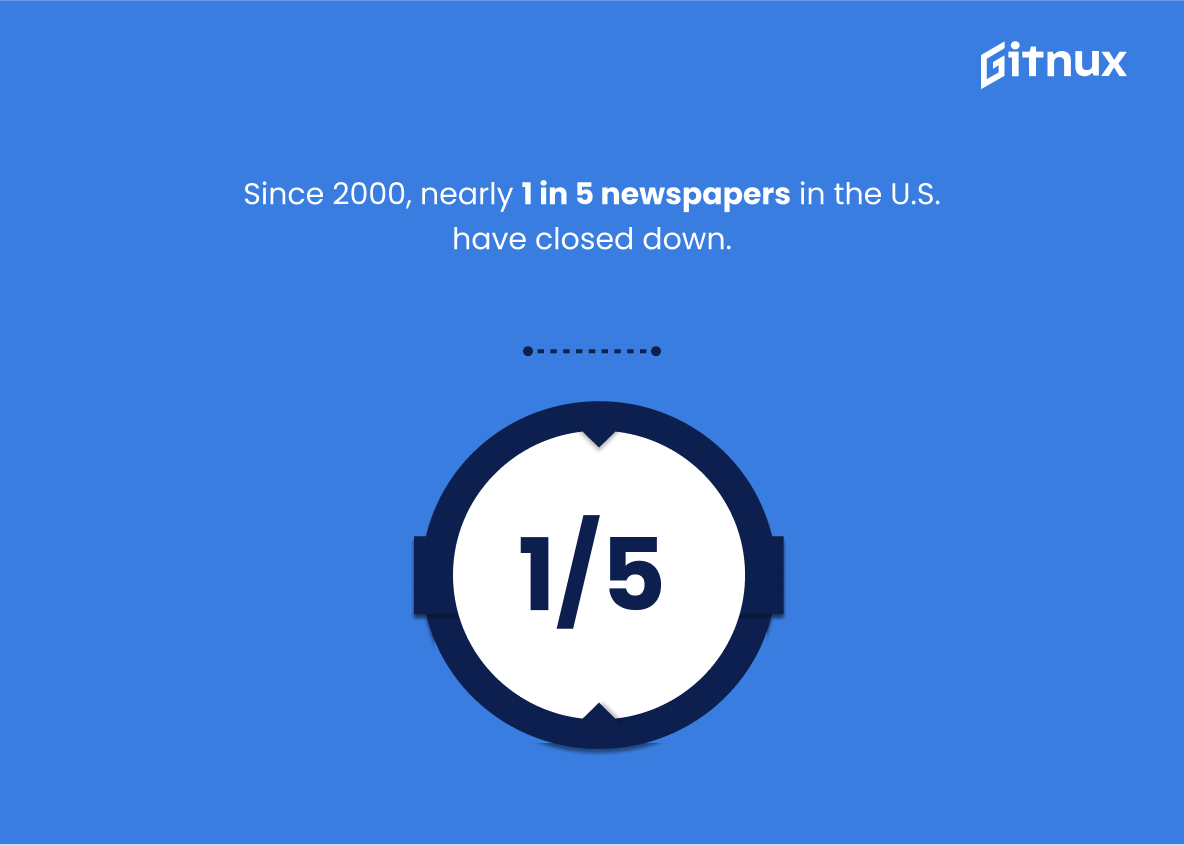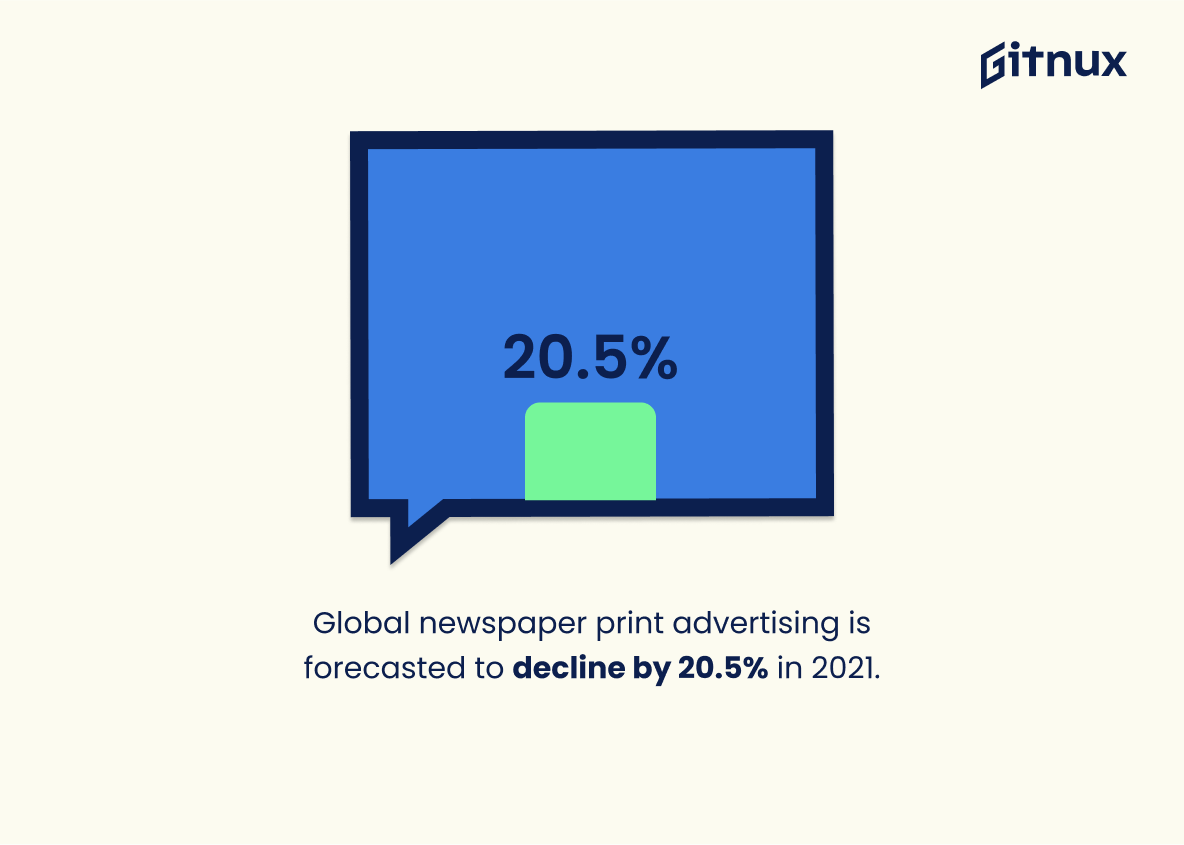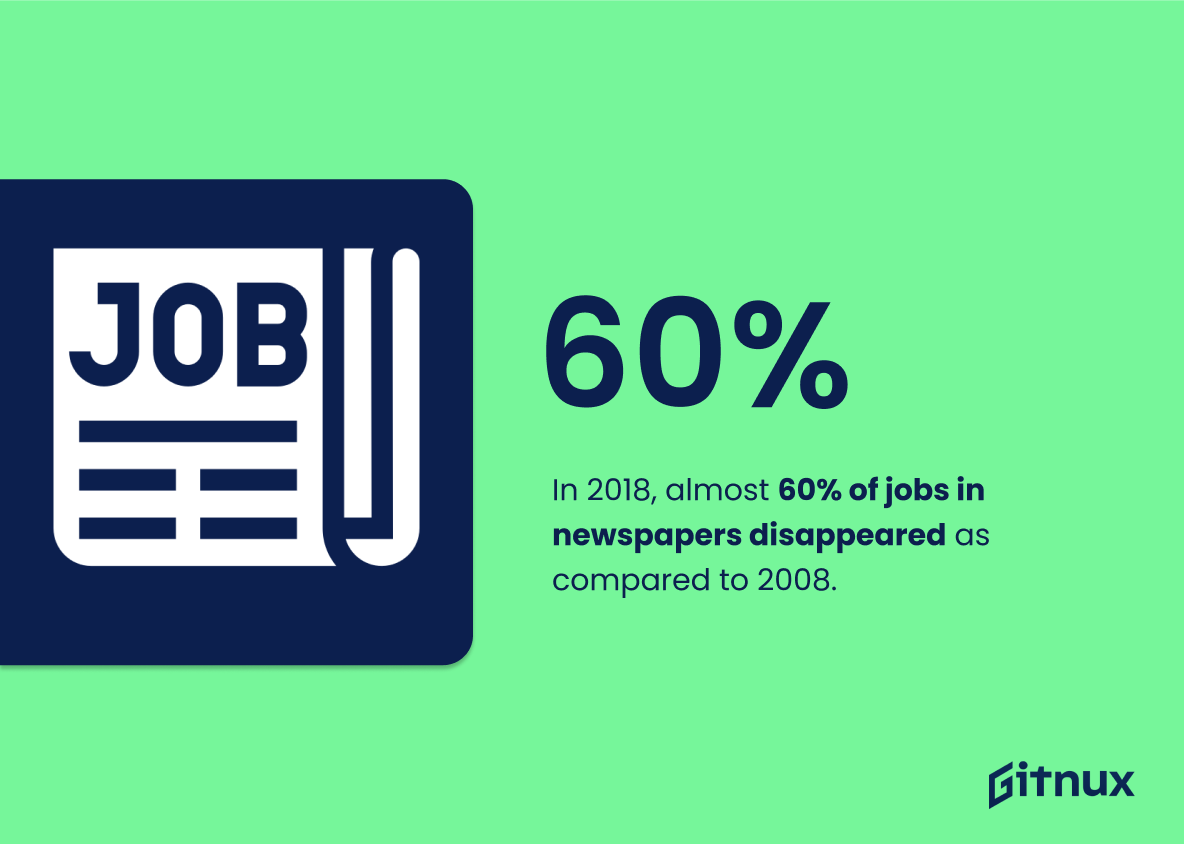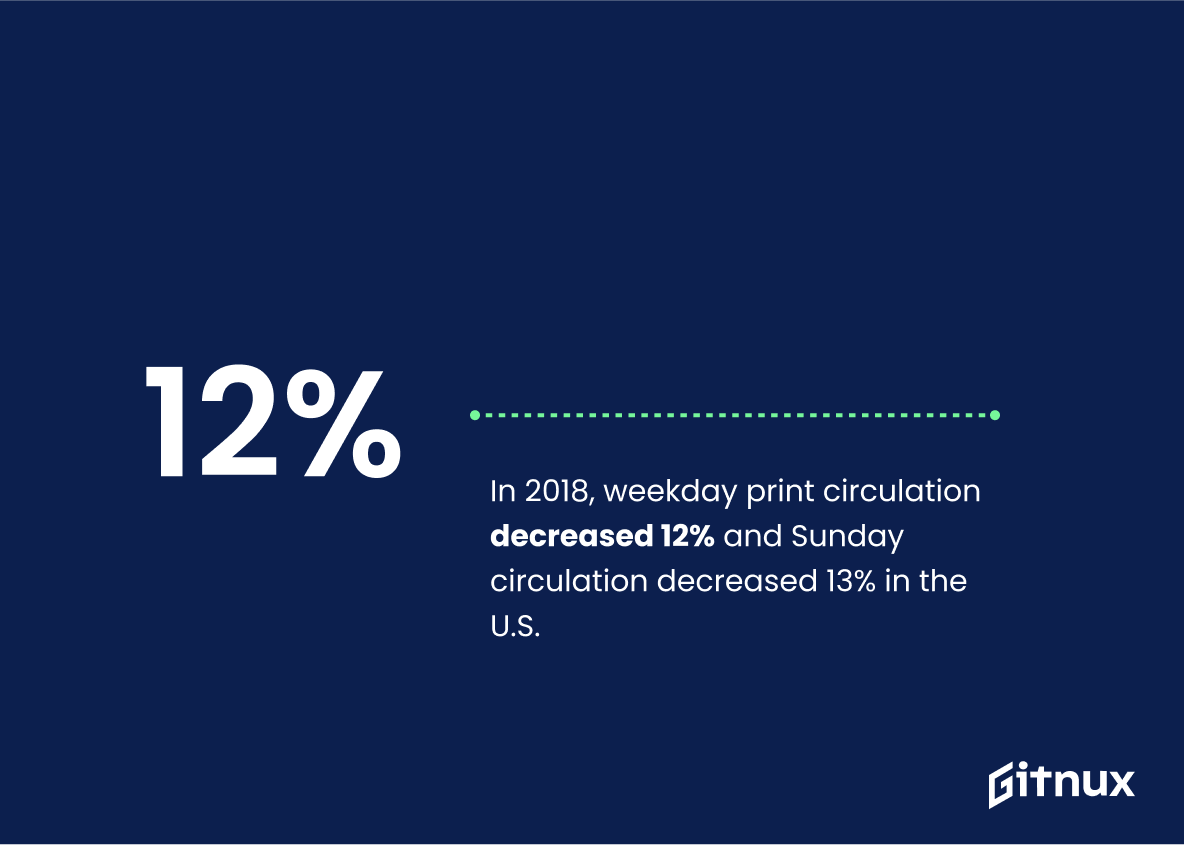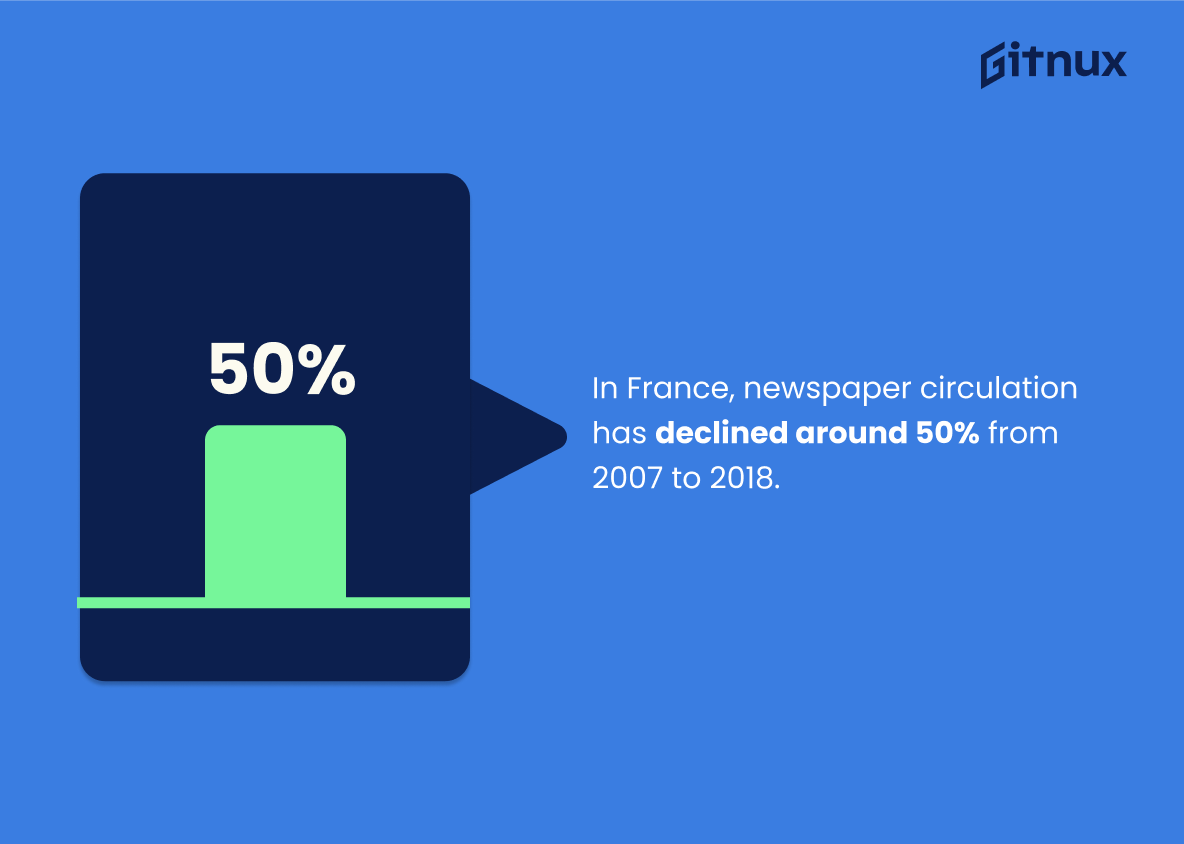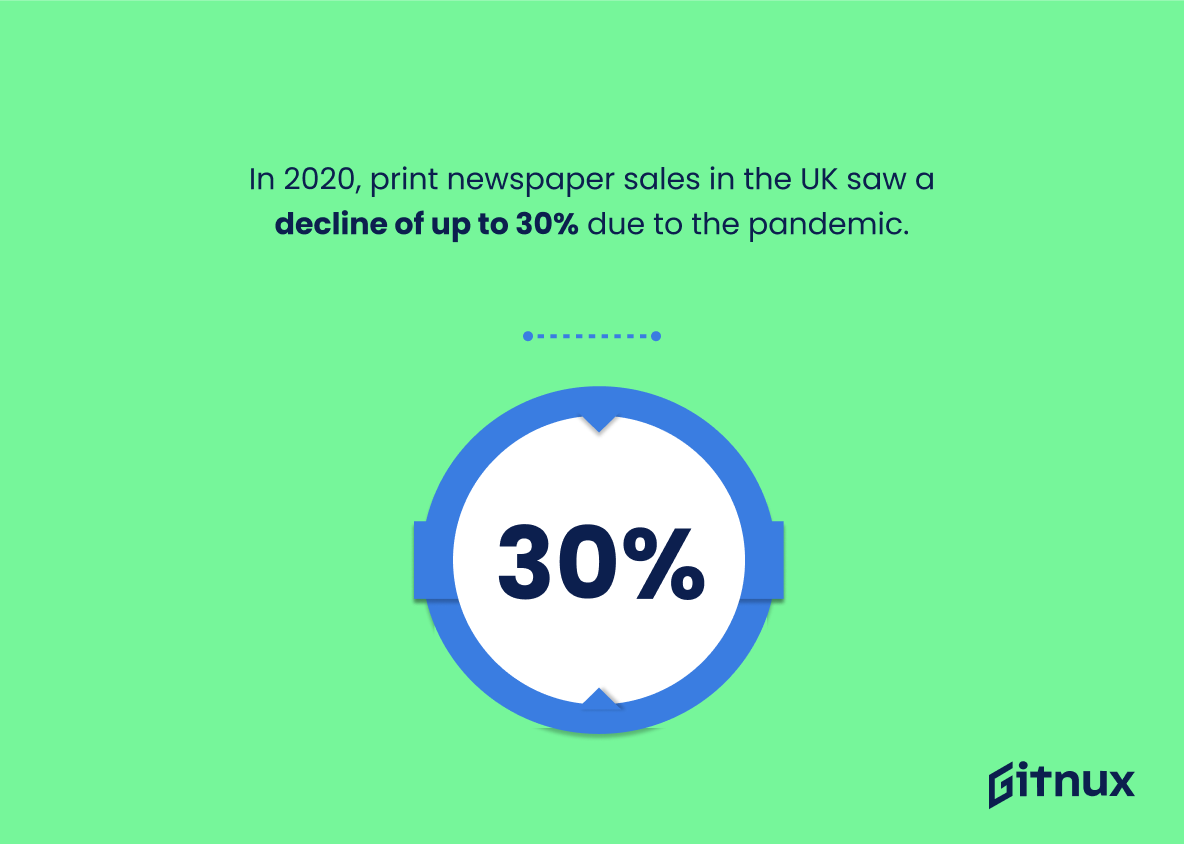In the increasingly digital age, the landscape of media consumption continues to evolve at a breakneck pace. This shift has been felt most notably in the newspaper industry, which has been grappling with a stark reality: declining readership. In this blog post, we will delve into the compelling world of newspaper decline statistics, shedding light on an important issue that is reshaping the field of journalism. We’ll uncover the reasons behind this trend, explore the implications, and paint a clearer picture on the current state – and potential future, of the newspaper industry.
The Latest Newspaper Decline Statistics Unveiled
In 2018, weekday print circulation decreased 12% in the U.S. from the previous year.
Dipping into the wellspring of trends, the 2018 figure paints a stark picture of the U.S newspaper industry’s battle against time and technology. With an alarming 12% descent in weekday print circulation from the previous year, it unearths the tale of shifting reader preferences and the conquest of digital media. This numerical testimony echoes the profound transformation in how news is being consumed today, making it a potent pillar in any discussion about Newspaper Decline Statistics. The statistic effectively underscores the urgency and scope of the crisis, reinforcing arguments about the struggle of traditional news media in the face of modernizing news consumption habits.
In the UK, newspaper circulation has fallen 30% since 1947.
Highlighting the dramatic drop of newspaper circulation in the UK by 30% since 1947 offers a stark snapshot into the shifting landscape of news consumption. The statistic plays a critical role in mapping the decline, quantifying the changing tides of reader habits and preferences over the decades. It serves as a barometer not only of the health of the traditional print journalism sector, but also of the wider evolution of public media consumption. In the era of digital dynamism, this figure attests to the growing importance of alternate, often online, news platforms – a key consideration for the blog post’s exploration of the ongoing decline in newspaper dominance.
In Australia, print newspaper readership dropped by 11.6% in 2020.
Highlighting the fact that Australia witnessed an 11.6% decline in print newspaper readership in 2020 paints a vivid, concerning picture in our exploration of global newspaper deterioration trends. Eye-opening data like this serves as a beacon, illuminating the shifting sands beneath the traditional print media industry. It underscores the reality of a dwindling print audience and hints at an increasingly digital terrain. Wrapped within this statistic is a conversation starter—it whispers of a changing media landscape, consumer preferences moving to digital platforms and the necessity for the print newspaper industry to innovate or risk becoming relics of the past.
65% of U.S. adults get their news from digital sources, contributing to newspaper decline.
Drilling down into the realm of the American news ecosystem, a compelling shift has taken shape – the booming migration of news consumers to digital platforms. The figure, a stark 65%, not only showcases the predilection of U.S. adults for digital news but also dramatically sketches the portrait of the besieged newspaper industry.
As the architect of this blog post, we vividly bring into focus the linkage between the flourish of digital news platforms – manifest in the ever-swelling majority of American adults sourcing news digitally, and the somber narrative of the crumbling newspaper industry. Nestled within this tension, is an essential understanding that underpins the entire discussion around newspaper decline statistics.
With a significant proportion of the audience now habitually scrolling past digital screens more than flipping through newspaper pages, the waning footfalls in the realm of print journalism is stark. The strength of this statistical revelation rests in its ability to graphically illustrate the changing news consumption pattern, which in turn, undergirds the narrative of the dwindling fortunes of the traditional newspaper industry.
The number of newspaper employees in the U.S. fell from 71,000 in 2008 to 35,000 in 2019.
The dramatic plunge in the number of newspaper employees in the U.S., capable of filling a stadium in 2008 to barely filling a mid-size concert hall in 2019, tells its own tumultuous tale. The story unfolds a halving narrative in the newspaper industry, illuminating a drastic shift in how news is consumed in the contemporary era. This chilling change in employee count frames the very essence of our discussion on Newspaper Decline Statistics – a discussion that underlines the urgency to recognize and adapt to this fast shifting journalistic landscape.
Among Canadians, print newspaper readership has decreased by nearly 40% since 2012.
Highlighting such a stark downturn in print newspaper readership among Canadians since 2012 underscores the dramatic shift in media consumption patterns. The hefty drop of nearly 40% is a glaring indicator of the pervasive decline of traditional print media. In the context of a blog post about Newspaper Decline Statistics, this revelation helps set the stage. It resonates with the reader by quantifying the magnitude of change and emphasizing the urgency of the transition to digital platforms. It not only buttresses the argument but also breathes life into the narrative, offering compelling evidence to spur the dialogue forward.
In India, the newspaper industry lost $1.8 billion in 2020 due to the pandemic.
The heartrending plunge of $1.8 billion in the Indian newspaper industry during 2020, painted a stark image of the newspaper’s precarious future in the pandemic’s wake. This gargantuan figure adds an extra layer of depth to the narrative of Newspaper Decline Statistics. With the shadow of such an enormous financial vacuum in one of the world’s populous markets, the understanding of the impact on the traditional press is heightened, suggesting a seismic shift towards digital media. It’s a grave reminder that no industry is immune to radical changes induced by global events, generating a sense of urgency and intrigue to adapt and innovate for survival.
Newspaper advertising revenue in the U.S. dropped 62% from 2008 to 2018.
Reflecting on the profound descent of newspaper advertising revenue in the U.S., a precipitous drop of 62% from 2008 to 2018, marks a pivotal talking point in our discussion on Newspaper Decline Statistics. This drastic downfall not only paints a vivid picture of the dwindling profitability and waning influence of print journalism but also underscores the seismic shift in the advertising landscape. As advertisers increasingly migrate to digital platforms, this shift brings into sharp focus the uphill battle that newspapers face in sustaining their relevance and survival in an era of rising digital dominance. This significant financial blow sheds light on the wider trends impacting the newspaper industry, providing a stark illustration of the urgency and indispensability for newspapers to innovate and adapt in a rapidly evolving media environment.
In 2020, print circulation of dailies in Japan fell to a record low of 42.7 million copies.
Delving into the desolation of the daily press, the chilling drop in Japan’s daily newspaper print catalog in 2020, at an all-time low of 42.7 million copies, provides concrete proof of the dwindling popularity of print media and the colossal shift towards digital platforms. This number speaks volumes about the changing reading habits and tech-savvy nature of the modern reader, who now prefers to assemble news from a variety of sources, as opposed to strictly from the ink-stained pages of traditional papers. This transition exposes the bare harshness of the survival puzzle that print newspapers face, serving as an unavoidable signpost on the path of the industry’s transformation and the paramount necessity for adaptation.
Since 2000, nearly 1 in 5 newspapers in the U.S. have closed down.
In the grand tableau of newspaper decline, the grim milestone imprinted by the data – ‘Since 2000, nearly 1 in 5 newspapers in the U.S. have closed down’, paints a stark portrait of the tumultuous terrains navigated by the print media industry. This sharp downturn showcases the tectonic shift in media consumption that has occurred over the span of a mere few decades, a heartbeat in the lifecycle of the venerable newspaper institution.
Imagine this, in the dawn of a new millennium, 20% of newspapers in the vibrant and diverse U.S. media landscape have been swept away by the winds of change. This statistic underlines the magnitude of the transformation in the media ecosystem, depicting the dent made by the advent of digital platforms and, by extension, the Internet.
In essence, this bone-chilling data point serves as a lighthouse, illuminating the profound impact of modern technology on traditional media, revealing the daunting challenge faced by newspapers in adapting to the Digital Age, and emphasizing the importance of innovation in a continually evolving media sea. Rest assured, it’s not the final chapter, but a ongoing narrative of the press wrestling to retain relevance amidst the digital tidal wave.
In 2018, almost 60% of jobs in newspapers disappeared as compared to 2008.
Diving into the heart of the newspaper decline tale, the statistical revelation of a near 60% job eviction in the industry from 2008 to 2018 sketches a poignant picture of the flux. Such a significant contraction in a decade helps to solidify the narrative of the metamorphosis that the newspaper sector is undergoing. It’s like a fine underscore, highlighting the very essence of the impending transition that looms over traditional print journalism. This figure not only exemplifies the brewing crisis, but it also serves as a bellwether, guiding readers through the labyrinth of the blog post, providing a concrete reference for understanding the severity of the decline. In essence, it lends gravity, authenticity, and perspective to the vanishing act of newspaper jobs.
Global newspaper print advertising is forecasted to decline by 20.5% in 2021.
Dive into the tsunami of transformation hitting the world of print media with this striking figure: a projected tumble of 20.5% in global newspaper print advertising in 2021. This precipitous fall paints a sobering picture for traditional newspapers, shaking their centuries-old foundations. It’s like a seismograph monitoring the heartbeats of this industry, emphasizing the dire urgency to adapt in the face of digital revolution. As we peek into this crystal ball statistic, we see a journey to extinction or evolution, transforming the way we perceive and discuss the future of newspapers in this blog post.
In 2018, weekday print circulation decreased 12% and Sunday circulation decreased 13% in the U.S.
The vivid illustration of the future landscape of traditional media is perfectly reflected in the 2018 statistics signifying a conspicuous decline in the realm of print newspaper circulation. The remarkable 12% decrease in weekday print circulation and a sharp 13% fall in Sunday circulation echo an unmistakable shift in the public’s reading habits. Painted against the canvas of broader newspaper decline statistics in a blog post, such data heightens the sense of urgency for print publishers to adapt to the digital age. The declination trend serves as a compelling signal that newspapers need to strategize and innovate to remain a primary source of news, or risk being left in the dust of online platforms.
In France, newspaper circulation has declined around 50% from 2007 to 2018.
A remarkable turn of the tide in France’s print journalism world is reflected in the staggering 50% drop in newspaper circulation from 2007 to 2018. It doesn’t just show a trend, it paints a vivid picture of how the fortress of traditional media is evidently crumbling. From this dramatic decline, one can glean insights into shifts in media consumption, technological influences, evolving reader preferences and the steadily increasing popularity of digital platforms. This bit of statistics therefore, is a critical puzzle piece in the larger narrative of newspaper decline, highlighting the urgency and scale of the change, and influencing strategies for print journalism’s battle for survival and relevance.
In 2020, print newspaper sales in the UK saw a decline of up to 30% due to the pandemic.
Showcasing the precipitous drop of up to 30% in print newspaper sales in the UK in 2020, triggered by the pandemic, paints a striking image of the accelerating shift in news consumption habits. The fact that such a substantial decline unfolded over the course of just a year underlines the drastic and rapid changes that are convulsing traditional media landscapes. In this context, it becomes clear that the digital revolution, catalyzed further by conditions necessitated by the pandemic, is leading to a veritable upheaval in the world of newspapers. This seismic shift, illustrated by this compelling statistic, unequivocally indicates the need for these traditional news mediums to innovate and evolve, or risk going extinct.
About 70% of Americans think local newspapers are doing well financially though actual data shows ongoing decline.
Unveiling the veil of misconception surrounding the world of local newspapers, we encounter this intriguing discrepancy. Despite the fact that approximately 70% of Americans perceive local newspapers to be basking in financial wellness, the raw data sings a drastically different tune, alluding to their constant financial decline. In the broader narrative of our blog post on Newspaper Decline Statistics, this statistic is like a bolt from the blue, spoiling the prevailing unanimity.
This staggering departure from reality helps unravel the complex dynamics of public perception versus factual reality. It can serve as a springboard for further illumination, spurring deeper enquiry into the underlying reasons for this dichotomy. Are these newspapers doing everything in their power to conceal their financial woes, or are Americans neglecting the signs of their decline?
Moreover, it can add a touch of compelling drama to the tale of decline we are telling, thus hooking the reader even further. This statistic not only highlights the ignorance of the public about the financial health of local newspapers, it also reveals the whopping contrast between perception and reality, enriching our narrative punch and introducing a layer of intrigue to our analysis of newspaper decline statistics.
The New York Times experienced a 5.2% decrease in print advertising revenue in 2019.
Delving into the raw numbers unearths a startling revelation: The renowned New York Times grappled with a 5.2% slump in print advertising revenue in 2019. This figure paints a stark reality and breathes life into our narrative surrounding the gradual descent of print newspapers. It weaves an important thread in our broader tapestry of Newspaper Decline Statistics. The tale this indicator tells, shines a spotlight on the shifting media consumption habits and dwindling popularity of traditional print media in the digital era. Moreover, it anchors a critical conversation about the economic pressures such pillars of journalism face amidst plummeting advertisement revenues, marking an inflection point in their journey to adapt and survive.
Germany’s national and local newspapers saw a combined circulation drop of 72% from 1991 to 2015.
The staggering 72% plunge in circulation for national and local newspapers in Germany from 1991 to 2015 serves as a stark warning siren, reverberating across the realm of print media. It starkly underlines the sharp descent of the print industry, encapsulating, in one fact, the seismic shifts in how news is being consumed and shared. Central to any discourse on the decline of newspapers, this figure threads storytelling with evidence, acting as a compelling testament to the relentless march of digitalization that is gripping the news industry.
From 2008 to 2017, the estimated total U.S. daily newspaper circulation (print and digital) fell 31% for weekday and 34% for Sunday.
Drawing from the impressive numbers reaffirming the decline, we seep into a reality that paints a graphic portrait of the media landscape’s evolution. Between 2008 and 2017, U.S. daily newspapers witnessed a stunning contraction in their circulation (print and digital), with weekdays falling off the cliff by 31% and Sundays taking a steeper tumble by 34%. These percentages underscore the tectonic shift in how news is consumed, signaling a diminishing appetite for traditional newspapers. This seismic shift stamps in bold the epochal transformation of our reading habits, lured away by the seductive convenience of digital alternatives. The relentless downward trajectory of these numbers elucidates the critical narrative of the blog post about Newspaper Decline Statistics, effectively serving as its numerical backbone and empirical reference point.
Conclusion
The steady decline of newspapers presents both a challenge and an opportunity. While the numbers clearly spell out a diminishing need for traditional print, these newspaper decline statistics also highlight the rise of digital news consumption. Now, more than ever, it’s crucial for the media industry to adapt and innovate. Although the tactile pleasure of turning a newspaper page can never be matched digitally, there are endless possibilities for immersive, interactive storytelling in the digital era. The future of news doesn’t necessarily spell doom and gloom; rather, it’s a call to evolution and innovation in a digitized world, where information is just a click away.
References
0. – https://www.www.journalism.org
1. – https://www.www.pewresearch.org
2. – https://www.www.worldpressinstitute.org
3. – https://www.www.livemint.com
4. – https://www.www.theguardian.com
5. – https://www.www.statista.com
6. – https://www.www.cnbc.com
7. – https://www.nmc-mic.ca
8. – https://www.www.wsj.com
9. – https://www.www.poynter.org
10. – https://www.roymorgan.com
11. – https://www.www.japantimes.co.jp
